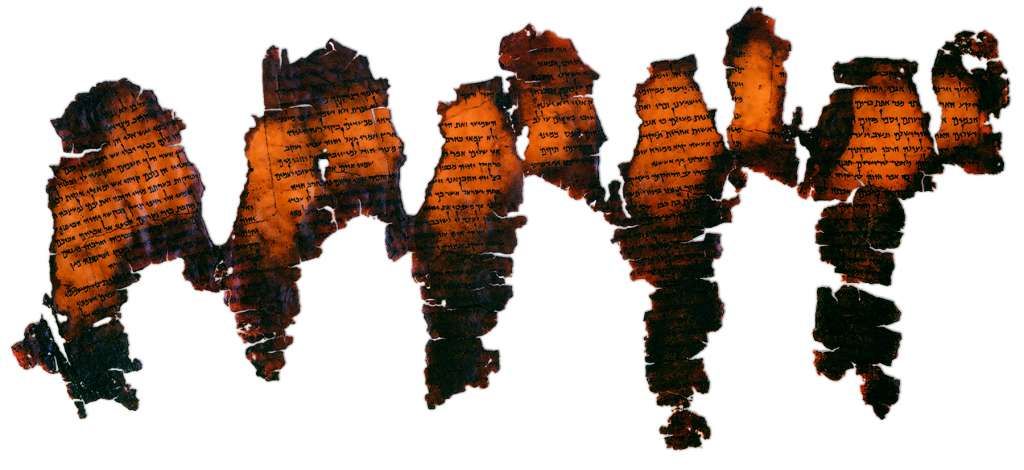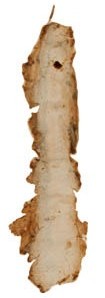 Edit article
Edit articleSeries
Newly Deciphered Qumran Scroll Revealed to Be Megillat Esther

Cave four where the 10QEsth was alleged to have been found.
Nearly half a century ago, archaeologists found a scroll in the Qumran caves that was unreadable as a result of a 2000-year-old wine spill. Due to the extensive staining, the scroll could not be opened or read. Curators stored it away in the archives, hoping that new technology might one day emerge to make the scroll legible.
Two Scientific Breakthroughs
Two such technological breakthroughs, serendipitously discovered just moments apart, have finally made reading this ancient, wine-soaked parchment possible. A team of archaeologists and chemists at the Technion in Haifa discovered that the wine could be extracted from the parchment using a highly delicate process known as “a little bit of seltzer.”
At the same time, researchers in the University of Bar Kamtza’s Center for Torah uMDMA[2] Studies looked at recent scientific studies of the ability of psychedelics to enhance vision, and realized that they could be applied to the study of the scrolls.[3] They found that microdoses of certain types of psychedelic mushrooms allowed the researchers to read and interpret otherwise unreadable ancient texts.
When the two teams combined their methods and applied them to this unreadable scroll, they were ecstatic to discover that it was a fragmentary copy of the Book of Esther, long thought to be the only biblical book not included in the sectarian library of Qumran. At nearly 2,000 years old, this scroll is the earliest known textual witness for the Book of Esther. Following the traditional naming system for the scrolls, the document has been designated by scholars as 10QEsth.[4]
Proto-MT or a Variant Text?
The first fragment, from the beginning of the book, matches remarkably well with the Masoretic text,[5] thus serving as the earliest textual witness for this part of the book. Letters appearing in brackets have been filled in by scholars.
|
ו[יהי בימי אחשורוש] |
 |
Although this section of the text is identical with the Masoretic text, other sections of the book diverged in notable ways from our text.
For example, after many days and nights of squinting at wine-soaked parchment, scholars were elated to find the Esther Scroll make reference to the War Scroll (1QM), connecting the sons of Haman to the Sons of Darkness. The following fragment contains the ten sons of Haman. Both columns of text were unfortunately lost, though the middle remains intact.
|
|
10QEsth ע[שרת]
ב[ני המן בני החושך בן המדתא] צ[רר היהודים בני האור הרג]ו ו[בבזה לא שלח]ו [ את ידם] |
MT עשרת
בני המן בן המדתא צרר היהודים הרגו ובבזה לא שלחו את ידם |
Merrymaking, Essene Style
However, the most fascinating find, discovered by Dr. Emanuel Sameach v’Tov Lev, was not in the scroll itself, but right nearby in the bottom of a jug. Though it appeared initially to be a small rock, advanced scientific techniques found it to be some very stale pastries, and a Judean candy known as l’af`i t’af`i. This find likely indicates that the custom of Mishloach Manot (sending portions of food to one another) was practiced at Qumran along with the reading of the Megilla.
Even more indicative of a lively Purim celebration at Qumran was an inscription on a jug that appears to have been used to store wine, indicating that one was to drink until he could not distinguish between the Kohen Harasha (Wicked Priest) and the Moreh Tzedek (Teacher of Righteousness).[6]
Qumran Purim Torah
While scholars long believed that the holiday of Purim was not celebrated at Qumran, the discovery of this Esther scroll, wine, and candy strongly indicates a very similar practice of the holiday to the Rabbinic practice. Given these finds, other long-held beliefs need to be re-examined.
For example, could the Temple Scroll just have been an elaborate Purim Shpiel put on by some local priests? Literary analysis using the most recent methods indicate that Pesher Habakkuk may have simply been an early Second Temple version of a Grammen. Finally, we must entertain the possibility that some entire scrolls were actually just a form of Essene shtick left for future generations, such as this lobster-shaped cut-out from the book of Isaiah:

Future Scholarship
This discovery enables scholars to begin to address exciting new questions, such as:
- Why did it take sectarians twice as long to read the megillah?[7]
- Can the independent third person pronoun used in Qumran Hebrew in tripartite verbless clauses be understood as a copula?[8]
- Did they have a Maharat Tzedek?
As scholarship continues to unravel the mysteries of the ancient Qumran community, we can expect additional discoveries at the nexus of the fields of biblical archaeology and applied psychedelics.
Wishing you a Purim sameach, or, as they would say in Qumran, א [פריילעכן פורי]ם!
TheTorah.com is a 501(c)(3) nonprofit organization.
We rely on the support of readers like you. Please support us.
Published
February 27, 2018
|
Last Updated
November 27, 2025
Previous in the Series
Next in the Series
Before you continue...
Thank you to all our readers who offered their year-end support.
Please help TheTorah.com get off to a strong start in 2025.
Footnotes

Dr. Rabbi Asher Tov-Lev is the Baron and Baroness Herzog professor of Ancient Near Eastern Oenology at the University of Napa Valley. He is the author of several books on the intersection of Biblical studies and mind-altering substances, including Saqol Yisaqel: A Stoner’s Guide to Biblical Law, and Ad Matai Ashanta Bitfillat Amecha (Psalm 80:5): What Were They Smoking in the Temple? His monograph on biblical drinking songs, tentatively titled Vatitpalel Chanah, will be coming out whenever he gets around to it.
Essays on Related Topics:










